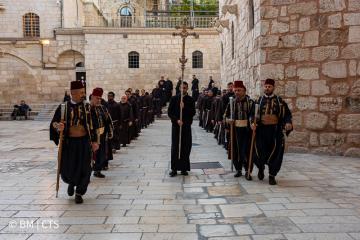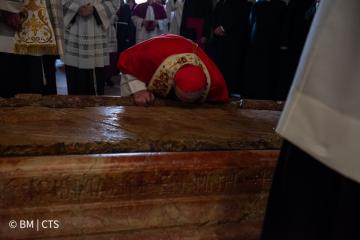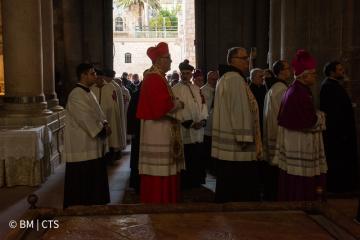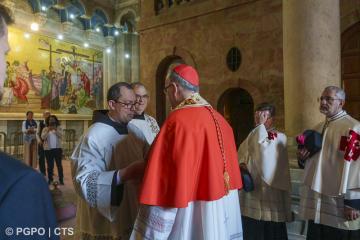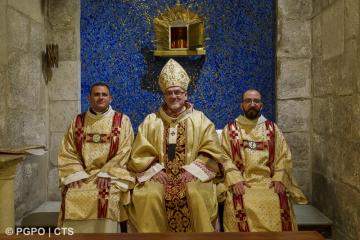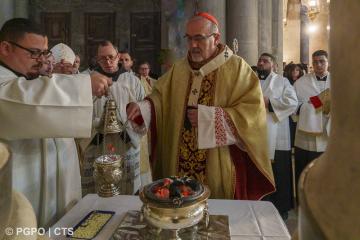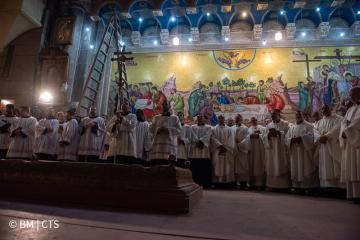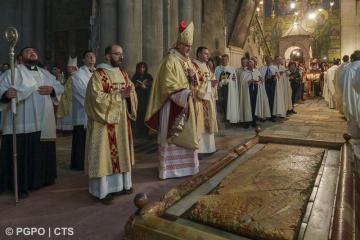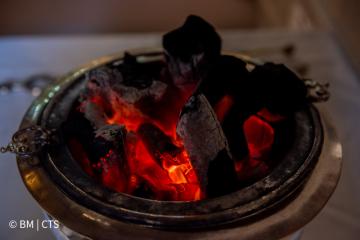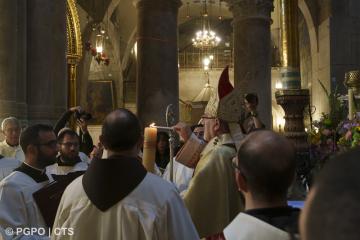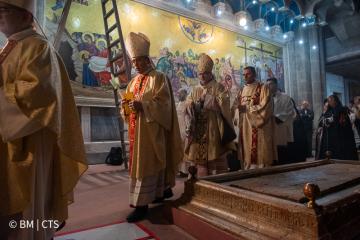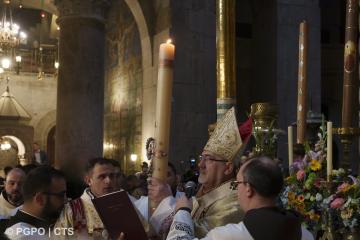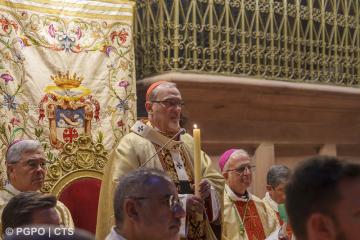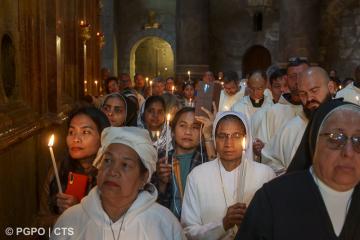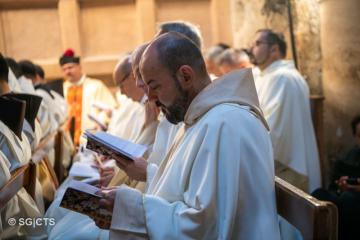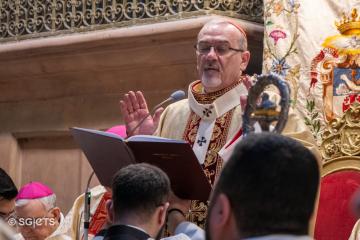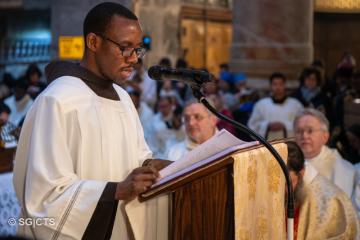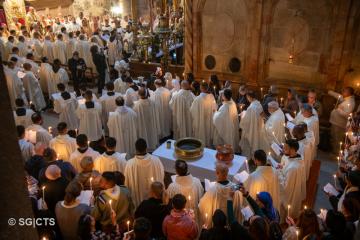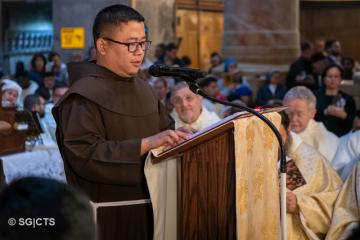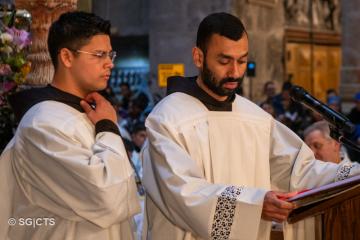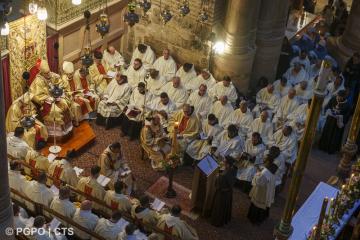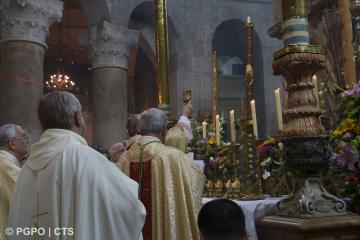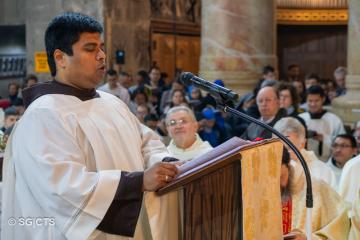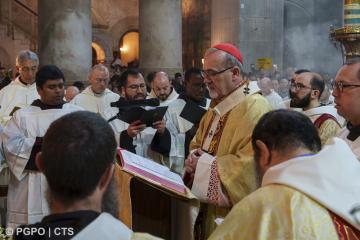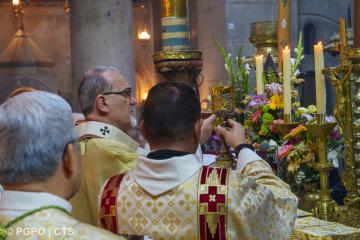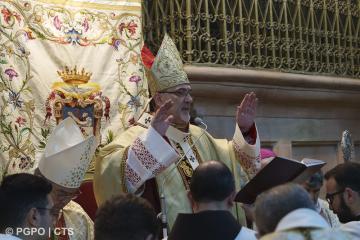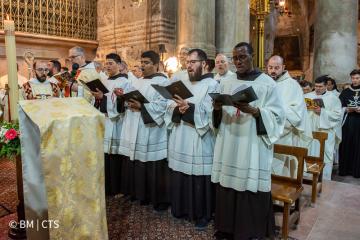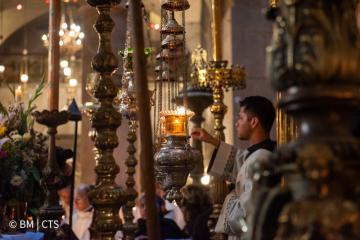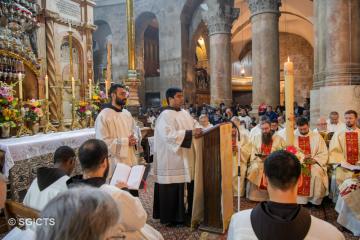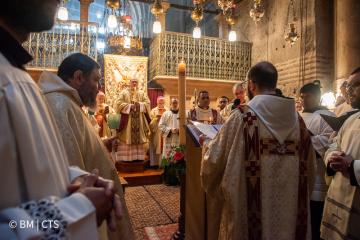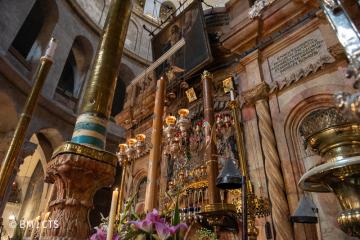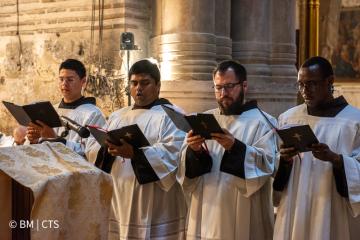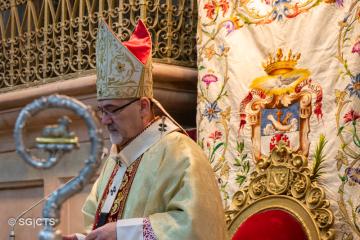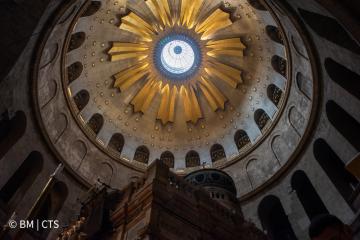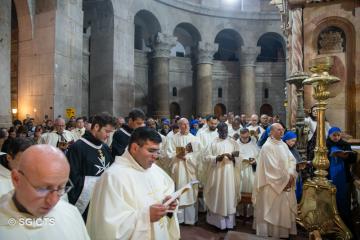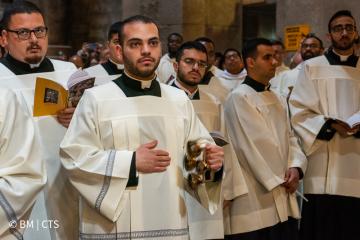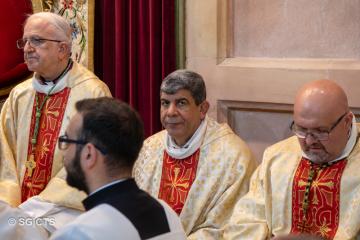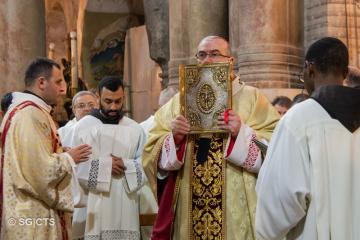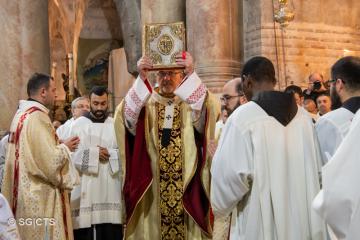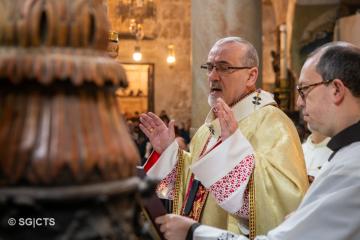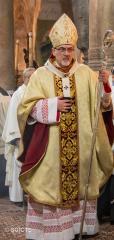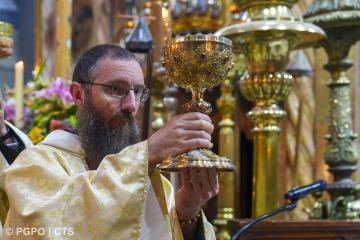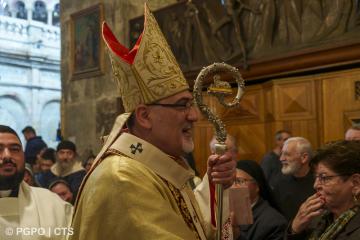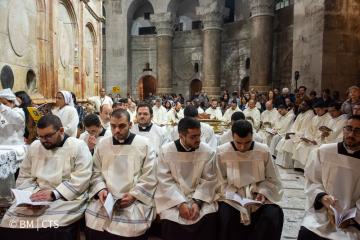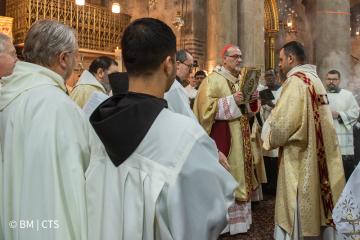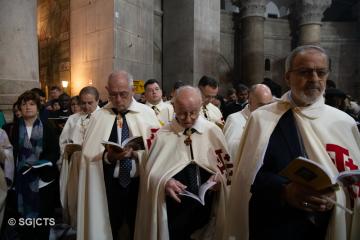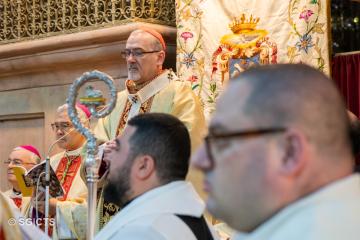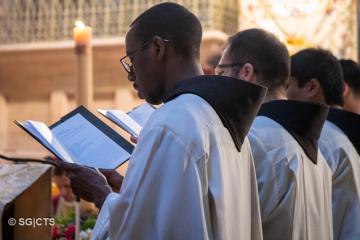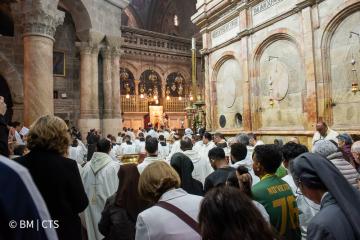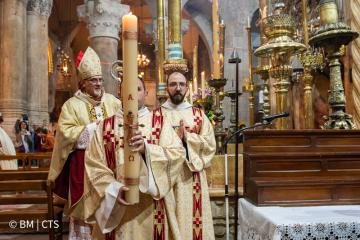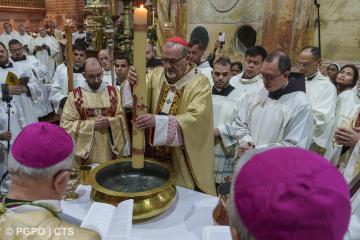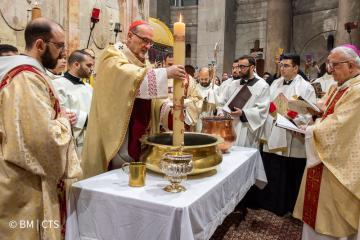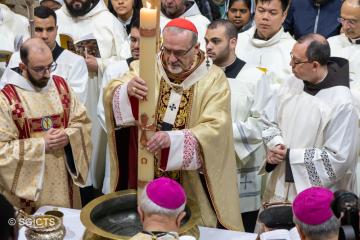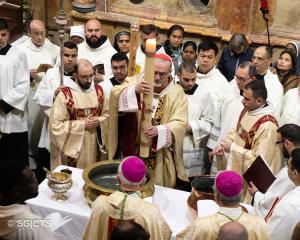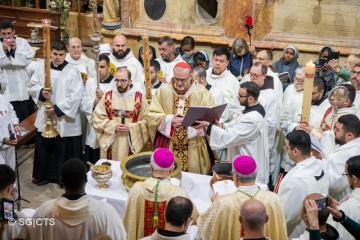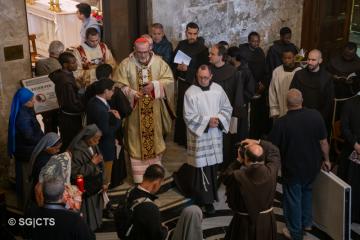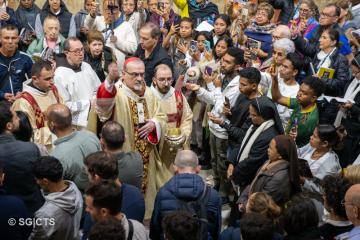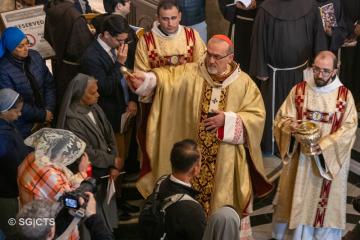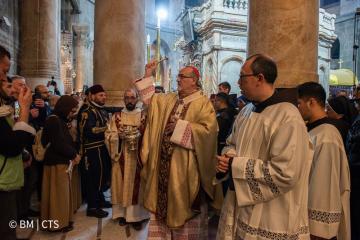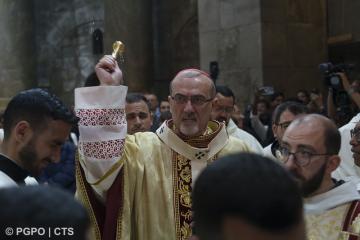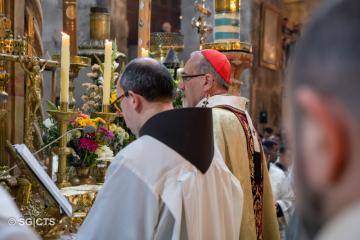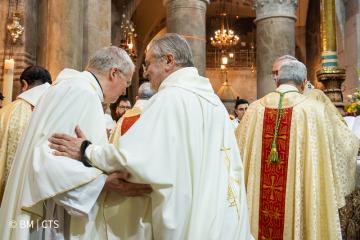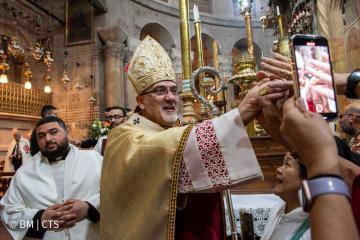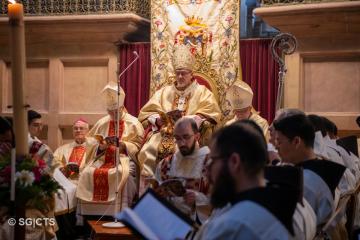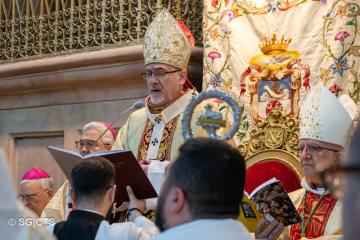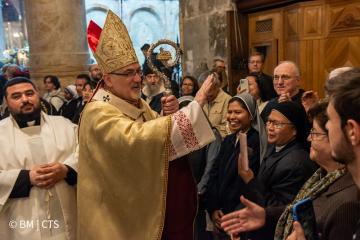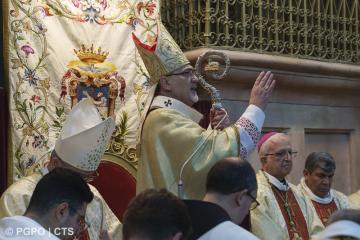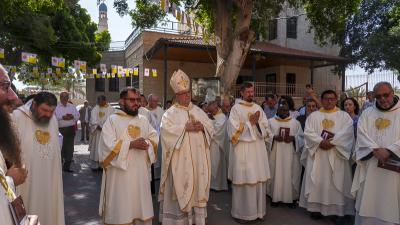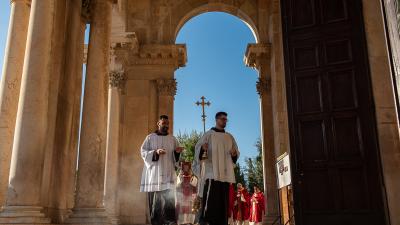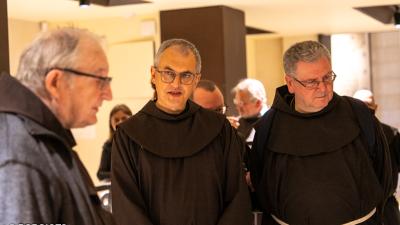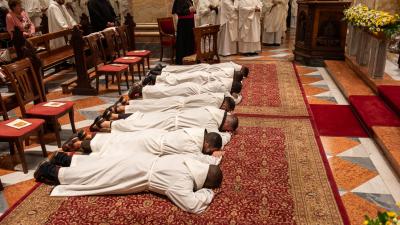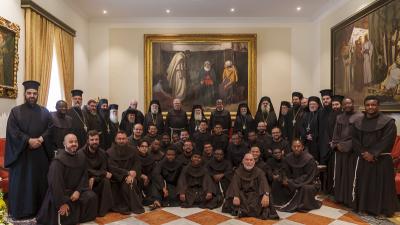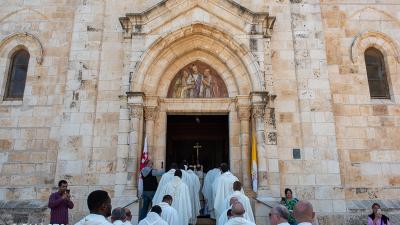
The Hallelujah resonated in Jerusalem in the early hours of the morning of Saturday 30 March: it is the peculiarity of the Basilica of the Holy Sepulchre, where the Easter Vigil is anticipated for requirements linked to the Status quo, that disciplines the life of the different Christian communities of the Basilica.
This is why the vigil in Jerusalem is considered the mother of all vigils. The Solemn Mass was presided over by the Latin Patriarch of Jerusalem H.E. Cardinal Pierbattista Pizzaballa, accompanied by numerous priests and faithful who flocked in the early hours of the day to follow the ceremony.

The rite of the Easter Vigil, which is very rich and complex, in the Basilica of the Holy Sepulchre, takes on a special value because it takes place in front of the Edicule, the very heart of Christianity, the tomb where Jesus was buried dead and from which he came out a victor and alive..
“The liturgy of Jerusalem,” the Patriarch began in his homily, “is built up around this Place, as is the liturgy of the whole Church. It is from here that we draw the light that illuminates the whole of Christian life. And we, the Church of Jerusalem, must and want to be those who are the first to announce the arrival of this light and give it to the world.”
The liturgical moments

The celebration of the vigil is made up of four moments: the liturgy of the light, which started in the entrance to the Basilica, is characterized by the rite of the lucernarium, in which the Paschal Candle, symbolizing the light of Christ risen in glory, is lit. This is followed by the liturgy of the Word, consisting of nine readings which went over “the history of a long promise of life”, in which the voices of the Franciscan friars and of the seminarians of the Latin Patriarchate alternated.
The baptismal liturgy, when the baptismal promises through rejecting Satan and the profession of faith are renewed, preceded the Eucharistic liturgy, where the faithful, freshly regenerated in baptism, take part in the table prepared by the Lord through his death and resurrection.
The peculiarity of this celebration is the proclamation of the Gospel of the Resurrection by the Patriarch of Jerusalem: it is the bishop of the Holy City who announces to the world the good news of the Resurrection.
The words of the Patriarch

In his homily, Cardinal Pizzaballa exhorted “Let us look upwards! The evangelist tells us first of all that the women look up (Mark 16,4): it is an expression to say that something new has happened, something that did not depend on human strength, to say that God became present - and that man, to see this marvel, has to look upwards.”
The reference to the present of Gaza and the dramatic situation in the Holy Land is evident in his words: “The terrible days we are living through,” he continued, “seem to have nullified our expectations, closed every path and cancelled the future. But if only we also look up, like the women in today’s Gospel, we can see something new, something that is taking place: the light of the Lamb returns to shine on our eyes. Jesus has unhinged the doors of the kingdom of death with the only weapon death cannot resist, which is that of love. If we love, we are free, we are risen.”.
From the very place where all this materially took place, where death was defeated and Life was given to us, Cardinal Pizzaballa concluded, “Let’s stop seeking the living one among the dead (cf. Luke 24,5). May Easter today be an invitation to set off and to go into our Galilees of today, to set off in search of the signs of His presence, presence of life, of love and of light.”
Silvia Giuliano


